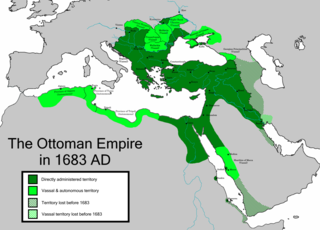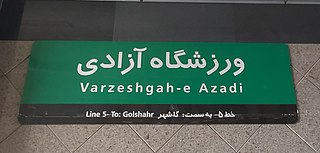
Arabic is a Central Semitic language of the Afroasiatic language family spoken primarily in the Arab world. The ISO assigns language codes to 32 varieties of Arabic, including its standard form of Literary Arabic, known as Modern Standard Arabic, which is derived from Classical Arabic. This distinction exists primarily among Western linguists; Arabic speakers themselves generally do not distinguish between Modern Standard Arabic and Classical Arabic, but rather refer to both as al-ʿarabiyyatu l-fuṣḥā or simply al-fuṣḥā (اَلْفُصْحَىٰ).

The Arabic alphabet, or Arabic abjad, is the Arabic script as specifically codified for writing the Arabic language. It is written from right-to-left in a cursive style, and includes 28 letters, of which most have contextual letterforms. The Arabic alphabet is considered an abjad, with only consonants required to be written; due to its optional use of diacritics to notate vowels, it is considered an impure abjad.

Persian, also known by its endonym Farsi, is a Western Iranian language belonging to the Iranian branch of the Indo-Iranian subdivision of the Indo-European languages. Persian is a pluricentric language predominantly spoken and used officially within Iran, Afghanistan, and Tajikistan in three mutually intelligible standard varieties, respectively Iranian Persian, Dari Persian, and Tajiki Persian. It is also spoken natively in the Tajik variety by a significant population within Uzbekistan, as well as within other regions with a Persianate history in the cultural sphere of Greater Iran. It is written officially within Iran and Afghanistan in the Persian alphabet, a derivative of the Arabic script, and within Tajikistan in the Tajik alphabet, a derivative of the Cyrillic script.
Yeshivish, also known as Yeshiva English, Yeshivisheh Shprach, or Yeshivisheh Reid, is a sociolect of English spoken by Yeshiva students and other Jews with a strong connection to the Orthodox Yeshiva world.
Indian English (IE) is a group of English dialects spoken in the Republic of India and among the Indian diaspora. English is used by the Government of India for communication, and is enshrined in the Constitution of India. English is also an official language in seven states and seven union territories of India, and the additional official language in seven other states and one union territory. Furthermore, English is the sole official language of the Judiciary of India, unless the state governor or legislature mandates the use of a regional language, or if the President of India has given approval for the use of regional languages in courts.
Hinglish is the macaronic hybrid use of South Asian English and the Hindustani language. Its name is a portmanteau of the words Hindi and English. In the context of spoken language, it involves code-switching or translanguaging between these languages whereby they are freely interchanged within a sentence or between sentences.

Classical Arabic or Quranic Arabic is the standardized literary form of Arabic used from the 7th century and throughout the Middle Ages onwards, having succeeded the Paleo-Arabic script. It was notably used in Umayyad and Abbasid literary texts such as poetry, elevated prose and oratory, and is also the liturgical language of Islam. Classical Arabic is, furthermore, the register of the Arabic language on which Modern Standard Arabic is based.

Ottoman Turkish was the standardized register of the Turkish language in the Ottoman Empire. It borrowed extensively, in all aspects, from Arabic and Persian. It was written in the Ottoman Turkish alphabet. Ottoman Turkish was largely unintelligible to the less-educated lower-class and to rural Turks, who continued to use kaba Türkçe, which used far fewer foreign loanwords and is the basis of the modern standard. The Tanzimât era (1839–1876) saw the application of the term "Ottoman" when referring to the language ; Modern Turkish uses the same terms when referring to the language of that era. More generically, the Turkish language was called تركچه Türkçe or تركی Türkî "Turkish".
Swenglish is a colloquial term referring to the English language heavily influenced by Swedish in terms of vocabulary, grammar, or pronunciation.

Modern Standard Arabic (MSA) or Modern Written Arabic (MWA) is the variety of standardized, literary Arabic that developed in the Arab world in the late 19th and early 20th centuries, and in some usages also the variety of spoken Arabic that approximates this written standard. MSA is the language used in literature, academia, print and mass media, law and legislation, though it is generally not spoken as a first language, similar to Contemporary Latin. It is a pluricentric standard language taught throughout the Arab world in formal education, differing significantly from many vernacular varieties of Arabic that are commonly spoken as mother tongues in the area; these are only partially mutually intelligible with both MSA and with each other depending on their proximity in the Arabic dialect continuum.

Lebanese Arabic, or simply Lebanese, is a variety of North Levantine Arabic, indigenous to and primarily spoken in Lebanon, with significant linguistic influences borrowed from other Middle Eastern and European languages and is in some ways unique from other varieties of Arabic. Due to multilingualism and pervasive diglossia among Lebanese people, it is not uncommon for Lebanese people to code-switch between or mix Lebanese Arabic, French, and English in their daily speech. It is also spoken among the Lebanese diaspora.
The Arabic chat alphabet, Arabizi, Arabeezi, Arabish, Franco-Arabic or simply Franco refer to the romanized alphabets for informal Arabic dialects in which Arabic script is transcribed or encoded into a combination of Latin script and Arabic numerals. These informal chat alphabets were originally used primarily by youth in the Arab world in very informal settings—especially for communicating over the Internet or for sending messages via cellular phones—though use is not necessarily restricted by age anymore and these chat alphabets have been used in other media such as advertising.
In linguistics, a blend—also known as a blend word, lexical blend, or portmanteau—is a word formed, usually intentionally, by combining the sounds and meanings of two or more words. English examples include smog, coined by blending smoke and fog, as well as motel, from motor (motorist) and hotel. The component word fragments within blends are called splinters.
Maltenglish, also known as Manglish, Minglish, Maltese English, Pepè or Maltingliż refers to the phenomenon of code-switching between Maltese, a Semitic language derived from late medieval Sicilian Arabic with Romance superstrata, and English, an Indo-European Germanic language with Romance superstrata.

Romanization or Latinization of Persian is the representation of the Persian language with the Latin script. Several different romanization schemes exist, each with its own set of rules driven by its own set of ideological goals.
Arabic has had a great influence on other languages, especially in vocabulary. The influence of Arabic has been most profound in those countries visited by Islam or Islamic power.
Kuwaiti is a Gulf Arabic dialect spoken in Kuwait. Kuwaiti Arabic shares many phonetic features unique to Gulf dialects spoken in the Arabian Peninsula. Due to Kuwait's soap opera industry, knowledge of Kuwaiti Arabic has spread throughout the Arabic-speaking world and become recognizable even to people in countries such as Tunisia and Jordan.
Urdish, Urglish or Urdunglish, a portmanteau of the words Urdu and English, is the macaronic hybrid use of South Asian English and Standard Urdu. In the context of spoken language, it involves code-switching between these languages whereby they are freely interchanged within a sentence or between sentences. In Pakistan and India, many bilingual or multi-lingual Urdu speakers, being familiar with both Urdu and English, display translanguaging in certain localities and between certain social groups.
The phonological system of the Hejazi Arabic consists of approximately 26 to 28 native consonant phonemes and 8 vowel phonemes:. Consonant length and vowel length are both distinctive in Hejazi.

Zabân-e Pâk is a treatise written in 1944 by Ahmad Kasravi, an Iranian author, contains an edition of the Persian language, which shows some difficulties in refining the language.








